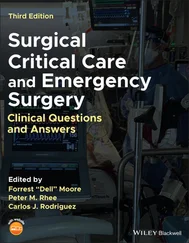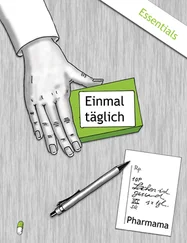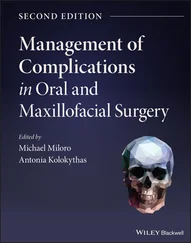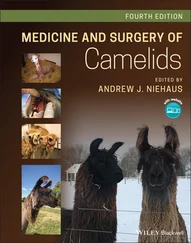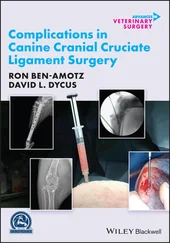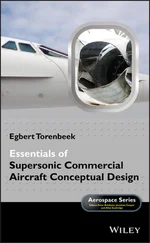Fig 1-4This 20-year-old patient was referred to the surgeon with the main complaint that her chin appeared too small and she did not like her “gummy smile.” Previous orthodontic treatment lasted 3 years and consisted of extraction of four first premolars, retraction of maxillary incisors, and proclination of mandibular incisors. She was not offered the option of surgical correction of her skeletal problem. (a) Frontal view. (b) Profile. (c) Smile. The dental compromise for the skeletal disharmony is evident in the occlusion (d) and the cephalometric analysis (e) . The ideal treatment for this patient would have been the preoperative orthodontic creation of a Class II malocclusion (possibly with a different extraction pattern), followed by the vertical repositioning of her maxilla and advancement of her mandible. In this case, however, an acceptable, although compromised, esthetic result was achieved by superior repositioning of her maxilla and advancement genioplasty, while the existing occlusion was maintained. (f) Postoperative frontal view. (g) Postoperative profile. (h) Smile.
The patient in Fig 1-5 decided against surgical correction of her Class II malocclusion and vertical maxillary excess dentofacial problem. The orthodontic compromise treatment plan consisted of extraction of first maxillary premolars, retraction of maxillary incisors, and establishment of an occlusion. Four months after beginning orthodontic treatment, the patient thought her appearance was worsening and realized that this treatment option would not be acceptable to her. It was then decided to decompensate the maxillary incisors to open the extraction spaces in the maxilla. The surgical treatment plan consisted of a two-piece Le Fort I maxillary osteotomy, superior repositioning of the maxilla, and surgical closure of the extraction spaces by advancement of the posterior maxillary segment (see Figs 1-5g and 1-5h). The mandible would autorotate, and the chin would be surgically advanced by means of a sliding genioplasty. In this case, an acceptable surgical solution could be found (see Figs 1-5i to 1-5m); however, in other cases, the surgical compromise for the orthodontic compromise may be limited from either an esthetic, functional, or stability aspect. In some patients with orthodontic compromise, the compromised dentition may cause challenges with solving the dentofacial problems and may even prevent a solution.
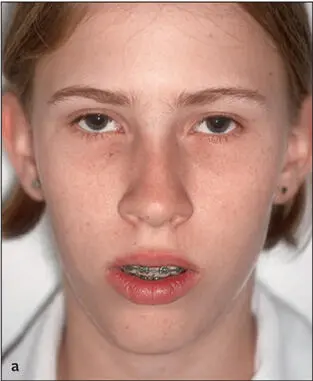

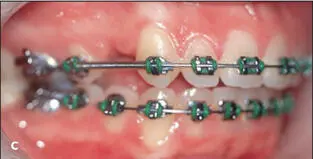
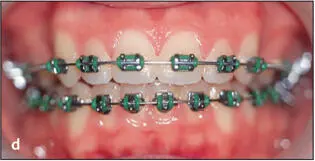
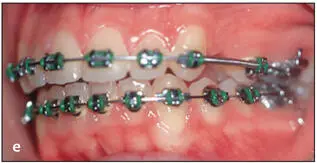
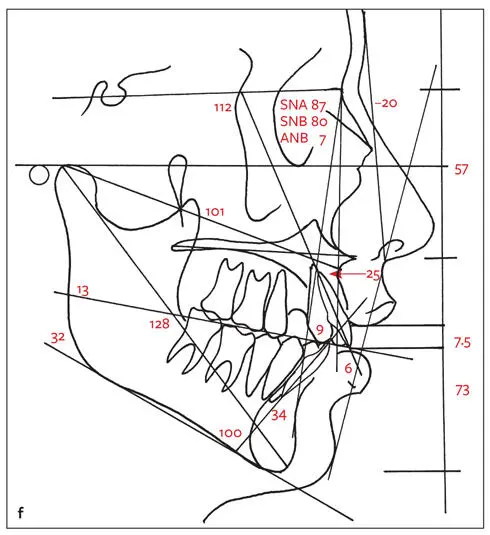
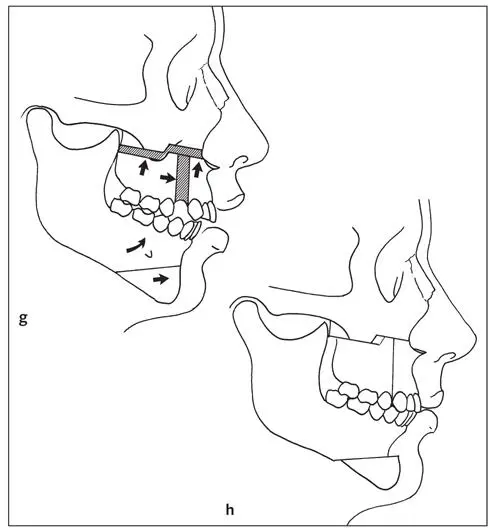

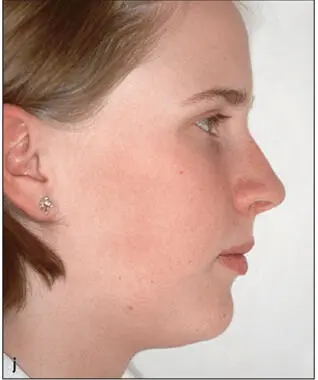
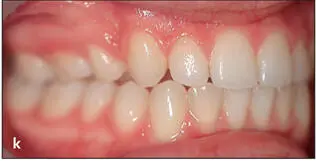
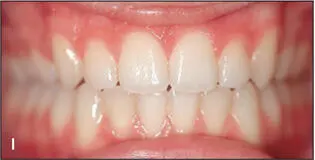
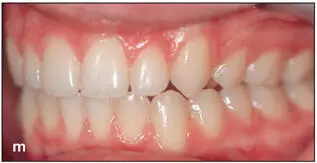
Fig 1-5Because the patient decided not to have surgery, the compromise orthodontic treatment consisted of extraction of the maxillary first premolars and retraction of the maxillary incisors. The deteriorating esthetic results are evident in the frontal (a) and profile (b) views. (c to e) The diagnosis of vertical maxillary excess and microgenia with a Class II malocclusion is confirmed by the occlusion. (f) Cephalometric tracing confirming diagnosis. (g) Surgical treatment plan. The maxillary incisors were decompensated, opening the spaces where the first premolars had been extracted. The surgery consisted of a two-piece Le Fort I maxillary osteotomy, superior repositioning of the maxilla, and advancement of the posterior segment to close the spaces. The chin was advanced by means of a sliding genioplasty. (h) Postoperative dental, skeletal, and soft tissue positions. (i) Postoperative frontal view. (j) Postoperative profile. (k to m) Postoperative occlusion.
Airway patency
There are several anatomical risk factors that may play a role in causing OSA. These include regional obesity, alteration of the nasal cavity, enlargement of other critical soft tissue structures of the upper airway, inadequate pharyngeal muscle tone, and a retrusive maxillomandibular skeleton. Patients with dentofacial deformities may suffer from OSA or be candidates to develop OSA. Some changes caused by dentoskeletal treatment when the patient is young may result in development of OSA when the patient gets older. A thorough medical and sleep history should be taken and a physical examination completed when indicated. See “Airway Considerations in Orthognathic Surgery” in chapter 2.
Stability
A treatment outcome of good function of pleasing esthetics is not acceptable without stability. Certain orthodontic tooth movements have questionable stability. An example is the extrusion of teeth to correct a skeletal anterior open bite; any preoperative orthodontic attempt to correct this type of open bite adds significant instability to the overall result. After the jaws are surgically repositioned beyond their biologic parameters, they will relapse into a more harmonious musculoskeletal relationship for the individual. Figure 1-6 demonstrates a case in which the orthodontic treatment of an open bite led to poor stability and unacceptable esthetics. Occlusal stability at any moment is the result of the sum of all the forces acting against the teeth (Enlow, 1990). A good occlusion is often the best retainer. It has been shown that the use of sound orthodontic mechanics and surgical techniques will produce optimal stability, function, airway, and esthetics.

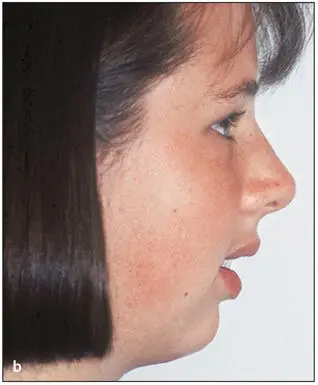


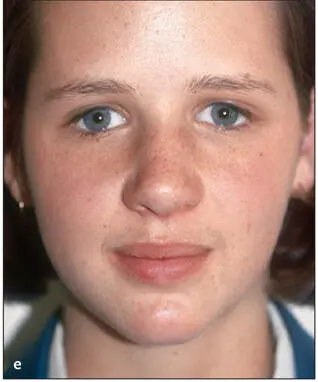
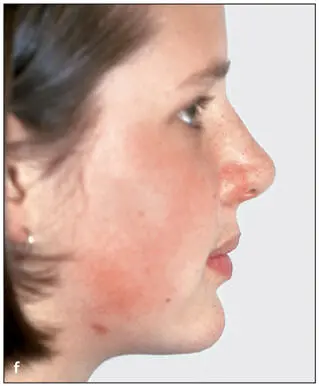
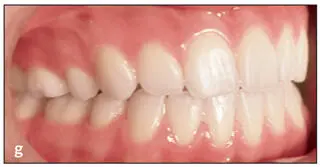
Читать дальше




















